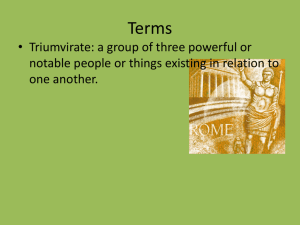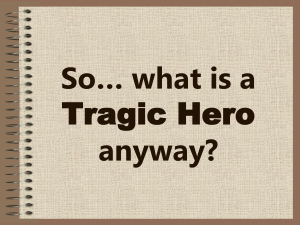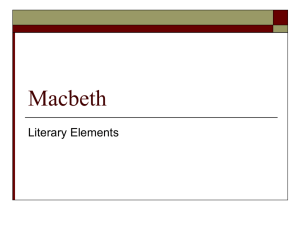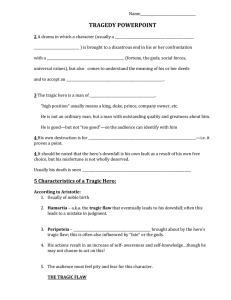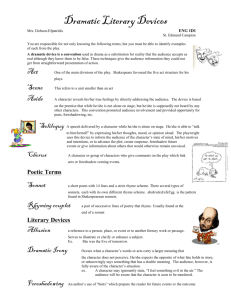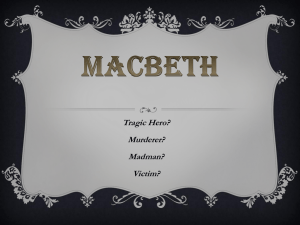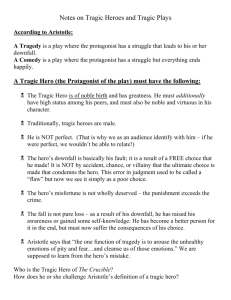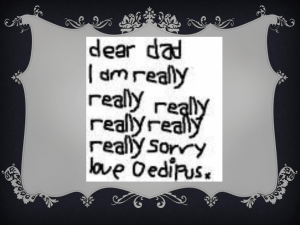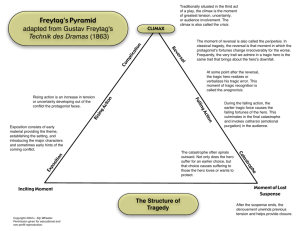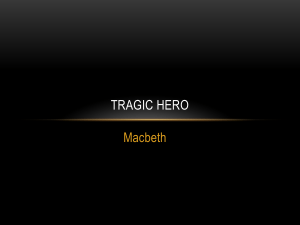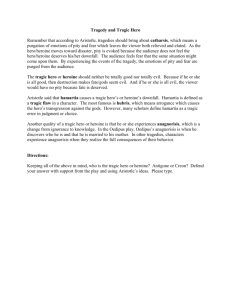What is a tragic hero
advertisement
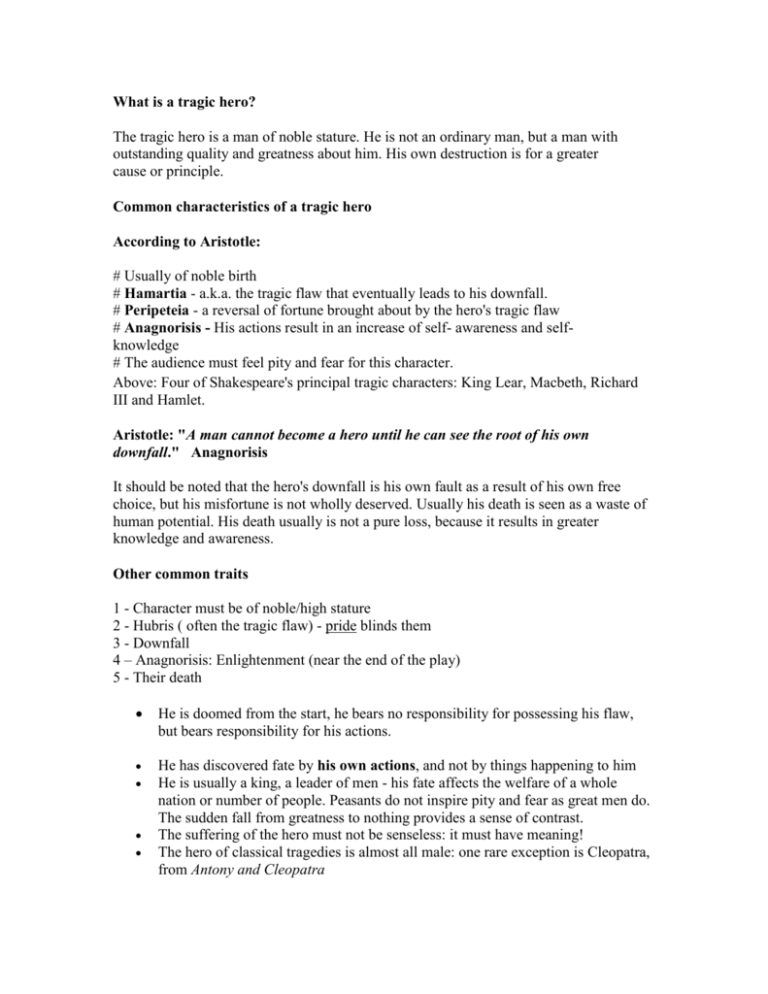
What is a tragic hero? The tragic hero is a man of noble stature. He is not an ordinary man, but a man with outstanding quality and greatness about him. His own destruction is for a greater cause or principle. Common characteristics of a tragic hero According to Aristotle: # Usually of noble birth # Hamartia - a.k.a. the tragic flaw that eventually leads to his downfall. # Peripeteia - a reversal of fortune brought about by the hero's tragic flaw # Anagnorisis - His actions result in an increase of self- awareness and selfknowledge # The audience must feel pity and fear for this character. Above: Four of Shakespeare's principal tragic characters: King Lear, Macbeth, Richard III and Hamlet. Aristotle: "A man cannot become a hero until he can see the root of his own downfall." Anagnorisis It should be noted that the hero's downfall is his own fault as a result of his own free choice, but his misfortune is not wholly deserved. Usually his death is seen as a waste of human potential. His death usually is not a pure loss, because it results in greater knowledge and awareness. Other common traits 1 - Character must be of noble/high stature 2 - Hubris ( often the tragic flaw) - pride blinds them 3 - Downfall 4 – Anagnorisis: Enlightenment (near the end of the play) 5 - Their death He is doomed from the start, he bears no responsibility for possessing his flaw, but bears responsibility for his actions. He has discovered fate by his own actions, and not by things happening to him He is usually a king, a leader of men - his fate affects the welfare of a whole nation or number of people. Peasants do not inspire pity and fear as great men do. The sudden fall from greatness to nothing provides a sense of contrast. The suffering of the hero must not be senseless: it must have meaning! The hero of classical tragedies is almost all male: one rare exception is Cleopatra, from Antony and Cleopatra Blank verse: The play is written in blank verse: unrhymed iambic pentameter. An iamb is an unstressed syllable followed by a stressed one. Pentameter means 5 units. Here’s a sample sentence: Around the rock the rugged rascal ran. Iambic pentameter is divided as follows: Ă•rou nd thﬞe ro ck thﬞ •geﬞ •caﬞl Structure: The five acts of the play show rising and falling action, with the climax of the play being in the third act. The structure looks like this: III II I IV V

